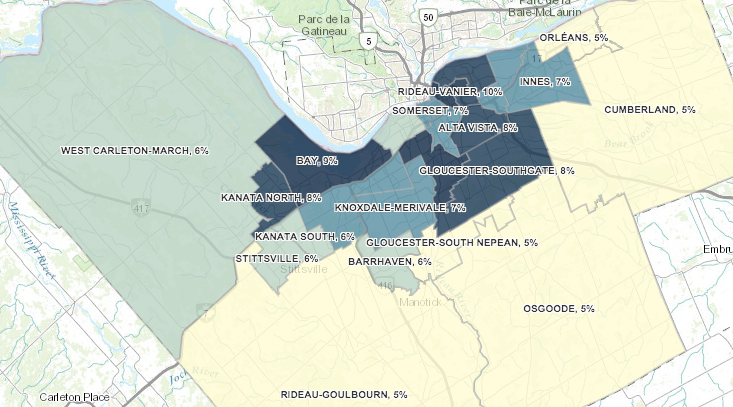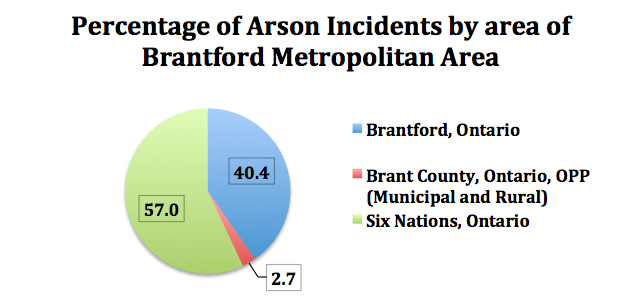
By: Zack Bradley
Mobility By City Ward
Create your own infographics
If you’re unemployed, there is a good chance you live around Vanier, according to the 2011 National Household Survey data.
The municipal ward of Rideau-Vanier, which consists of the neighbourhoods of Sandy Hill, the Byward Market, Lowertown, and Vanier, holds 7 per cent of the city’s unemployed workers and has the highest rate of unemployment, with 10 per cent of its residents not having a job.
City Councillor Mathieu Fleury, says the high rate is mainly caused by the large number of low-income families that reside in the ward. However, he also notes that this data is just a snapshot and does not reflect the ward today.
“Rideau-Vanier has such a quick turnover of residents and this makes it difficult to examine,” says Fleury. “You could back track or go forward 6 months and get completely different results. This is just too small of snapshot.”
Fleury is correct by noting the mobility. According the National Household Survey, in the past five year, 57 per cent of residents in Vanier changed homes, giving the ward the second highest amount of mobile residents. Whether these residents moved outside the ward or stayed within is unknown, but it is apparent many residents are not staying still for long, which can be a problem for comparing data.
Suzanne Valiquet, the former executive director of the Vanier Business Improvement Area, actually says a high rate of mobility can cause high unemployment rates, but it is not the big issue at hand. Valiquet says the issue of unemployment is result of a lack of action between the city and local business developers in gentrifying the area.
“Vanier is very much like any intercity neighbourhood that has not yet been white-painted or gentrified,” says Valiquet. “There is a redevelopment process occurring all over North America right now and in our city, this is where it hasn’t happened.”
Valiquet, who claims she felt as if Vanier had been forgotten during her time at the BIA, questions why the city has not begun to start redeveloping Vanier as it has with other neighbourhoods.
“Vanier is the closest in proximity to the downtown core. It should have been developed by now,” says Valiquet. “Why isn’t this part being developed like the rest of Ottawa? Westboro was not much different from Vanier before, but you wouldn’t know it now.”

Contributed to DocumentCloud by Zachary Bradley of David McKie’s Research Methods • View page as text
However, while frustrated with the lack development, Valiquet does agree there are other factors responsible for this high rate of unemployment in Rideau-Vanier. Valiquet points to a lack of education, a high amount of immigration, and a bursting number of low-income families as reasons for so many jobless residents.
She also notes, as strange as it sounds, that Vanier has simply become a hot bed for the unemployed.
“Vanier is like a little city inside a big city. It has all your amenities within walking distance and you’re close to everything,” says Valiquet. “If you’re going to be unemployed somewhere in the city, it’s the place to be. You got everything you need.”
Yet, as Valiquet notes, pinning redevelopment against unemployment does not always result in the friendliest results. .
“While gentrifying is great, it still leaves the question of where are these people going to go? Because they’re not going up with the houses,” says Valiquet about the currently unemployed in Vanier. “The properties will take value, but it will result in the unemployed being pushed out and there is nowhere for them to go. That’s the sad part to all this.”



